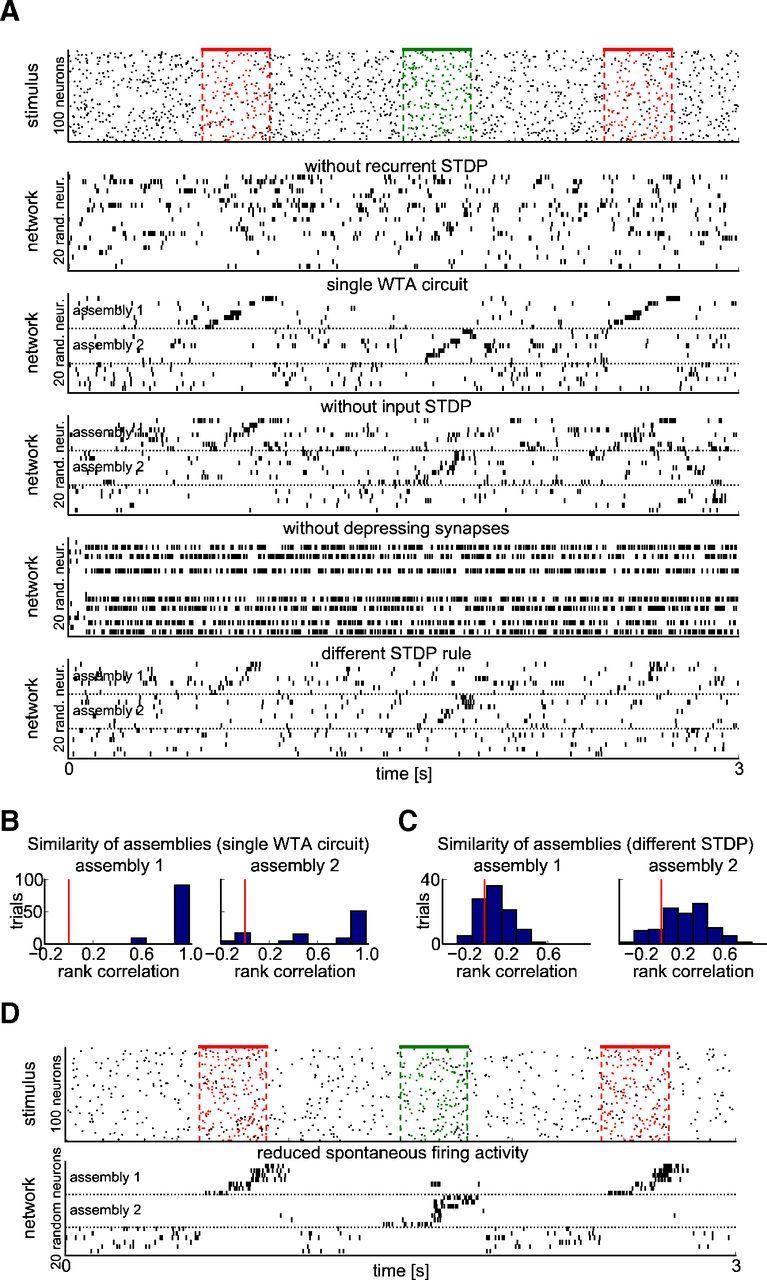Figure 6.

Consequences of changes in the network structure or the STDP rule. A number of control experiments elucidate the relevance of specific features of the network model. The base experimental setup is the same as in Figure 5. A, Responses to the same stimulus (top) are shown after 50 s of pattern presentations in the input stream for different variations of the network (as in Fig. 5A). From top to bottom: STDP is not applied to recurrent connections, instead their weights remain fixed at random values; the network is composed of a single WTA circuit of comparable size and total activity (268 neurons, Rmax = 2500 Hz); input weights remain fixed at random values; temporal dynamics of synapses (paired pulse depression) is deactivated (Rk = uk = 1); another STDP rule was applied (see Materials and Methods). B, C, Histograms of rank correlations as in Figure 5E for the “single WTA circuit” and “different STDP rule” scenarios. D, Emergence of assembly codes (similarly as in Fig. 5) for a different regulation of network activity. Here the input rate is decreased to 2 Hz between input patterns and the sum of firing rates in the network (spontaneous activity) is reduced from 100 to 70 Hz during this time (by regulating the factor Rmax for divisive normalization accordingly; see Equation 3). These control experiments show that short-term dynamics (depression) and STDP on recurrent synaptic connections are essential for the emergence of stimulus-specific assemblies, whereas STDP on synaptic connection from input neurons, the precise shape of the STDP curve, and a lower level of spontaneous firing are not. If the network of WTA circuits is replaced by a single very large STDP (third panel in A, B), stimulus-specific assemblies also emerge, but their firing order is extremely precise (differing in this respect from most experimental data).
